#stanky brown group
Text

Great American Music Fair '75
Village Voice, August 1975
#beach boys#doobie brothers#america#Jefferson starship#new riders of the purple sage#stanky brown group
1 note
·
View note
Text
Stars (1977)

Original Stars, Original Hits
K-Tel Records
#kiss band#10cc#daryl hall & john oates#al stewart#mary macgregor#dr. hook#yvonne elliman#atlanta rhythm section#cliff richard#addrisi brothers#k.c. & the sunshine band#tavares#thelma houston#stanky brown group#war#quincy jones#william bell#climax blues band#k-tel records#70’s music#70’s rock#classic rock#soft rock#pop rock#album cover#album art#vinyl records
5 notes
·
View notes
Text
CRASH - I promise no race talk
First, let me say that this particular post will be a safe space. No race talk here.
Today, we're going to talk a lil "Crash".

This movie came out in 2005; I hadn’t watched it since then. I remembered really liking it. I remembered Ludacris and Larenz Tate stealing the movie as a comedy duo.

I remembered these two ladies:
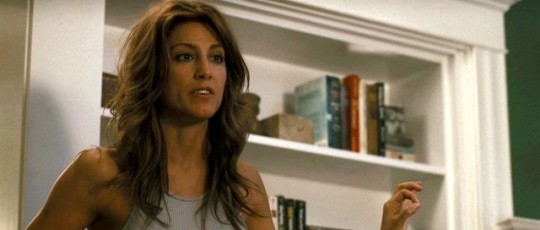
(Jennifer Esposito - not the best picture of her, and perhaps that’s partly my fault. She is pissed in this scene... probably because the person whom she is talking to is not me :)
and Bahar Soomekh

(Wait, that’s “Saw 3... hmm... she was in “Saw 3″ btw.)
Let me try again -

(Nope. Dammit. Still “Saw”)
You get the idea. These two ladies! Yes!
I remembered watching this movie with my then girlfriend, and thinking to myself "As soon as this movie is over, I'm breaking up with her and seeking these two out, to propose to the both of them - this is my destiny."
I remembered something about Saint Christopher, who is apparently the patron saint of travelers.

He was kinda like an Uber driver (I guess... and by the looks of this depiction, a grumpy Uber driver). He will get you safely to where you'd like to be, as long as
you listen to his smooth jazz, questionable philosophies on life, and of course allow him to flirt a lil with you.
Oh, and I remembered Luda getting his ass beat by the dude from "Empire"
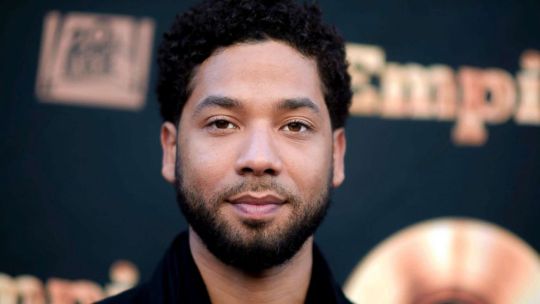
- no, not that dude.
This dude - (Terrence Howard).
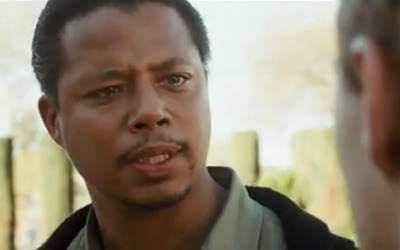
I believe that anyone who tries to explain what this movie is about will end up sounding like they've had one too many to drink:
"It's about a bunch of people of different races/ethnicities who... have racist stuff happen to them. And they don't know each other, but they're kinda connected... and there's a crash... although it doesn't have much to do with the story... but it kinda does... maybe? Ludacris is in it. He gets his ass beat by that guy from "Empire", but not that guy... the other guy. Racism sucks, bro."
Trying to explain it is similar to how we'll (years from now) try to explain 2020... or Trump being president.
Let's me try to break it down:
Don Cheadle is Detective Graham Waters (what a name).
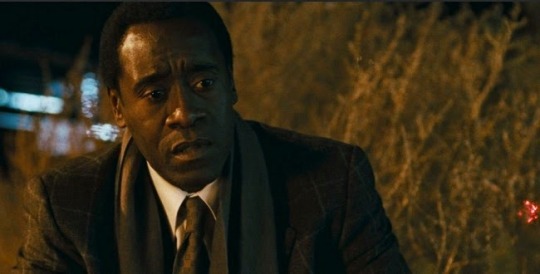
He deals with a lot of race stuff on the job and in cases.
Race stuff that I'm sparing you from today (you're welcome:) Annnnd he's banging one of the women whom I thought would be my future wife.

The first time that we meet HER (another detective), we learn that she's pretty racist.
Side note: Can one be both pretty AND racist? Does the racism overwhelm the pretty face? or vice versa?
Would some of us see Trump as being racist, if he looked like Chris Hemsworth?
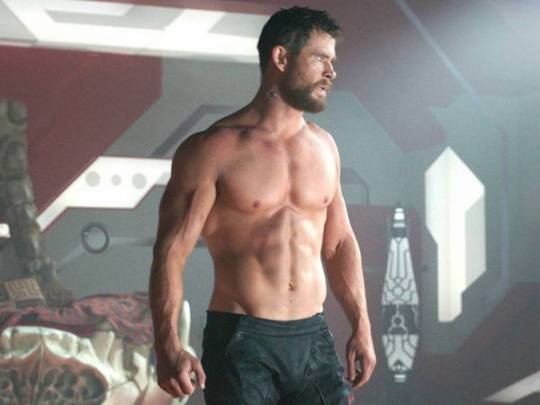
(and always gave press conferences shirtless)
Sorry, I promised no race talk.
What if Trump looked like this?

Are presidents allowed to get sex changes?
So, Terrence Howard and Thandie Newton have a racist and perverted encounter with the cops.
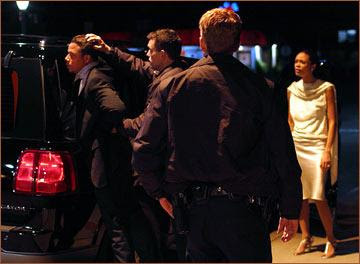
The more I think about it, the more I blame most of the horrible events that take place in this movie on these two cops (and their superiors).
Had they worked by better standards, a lot of the bad things that end up happening in this movie wouldn't have happened.
Terrence and Thandie have some race stuff going on within their relationship as well (which I won't be talking about :)
Brown people also have race fights; whitey doesn't always have to be involved.
I talked about Luda and Tate already. They're kinda like hipsters in a sense (in spirit).
They have a racial commentary/banter throughout the whole movie. They're right about the things that they say (which I'm still not talking about). The prob is that they're also criminals.
Sandra Bullock (who's prob the most racist character in the movie) and Brendan Fraser are also doing their thing in this movie.
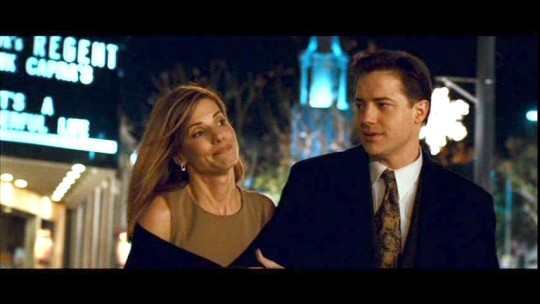
They're your stereotypical wealthy white couple. Fraser's character is in politics. There's some juicy race stuff there as well. We'll just ignore
all of that.
Tony Danza is surprisingly in this just to be racist. Now, TD is before my time, but I remember him being loveable - no??
That's what makes it weird. Kinda like if Stephen Colbert swung through a movie briefly just to drop an N-bomb or something.

Michael Pena is here, because... he's on the short list of Latinos that Hollywood knows.
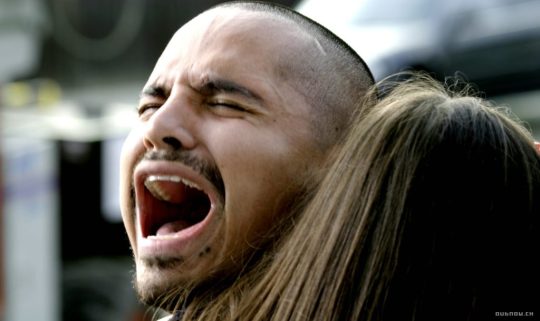
I think this movie was his big shot (which he killed). Look him, he’s acting his ass off. His mouth opened so wide... that’s acting!
He's also the only character in this movie who's NOT an asshole. He's actually a good guy.
Even in the midst of people being very openly racist towards him, he remains calm and collected. He has a daughter who is scared, and so he gives her an invisible cloak that has a supernatural, imaginary ability to make her invulnerable. She then puts it on and immediately runs into traffic... and you know... BOOM!
I'm joking. But, that could have happened. Parents, don't lie to your children.
There's a scene where she does face some danger as a result of this lie. Spoiler alert, she makes it. Maybe it was the power of Saint Chris. Though she appears to be the only one that he saves in this flick.
Seems like every time the good ol saint Christopher appears, someone pulls out a gun. Patron Saint of Gun Violence.
Fun fact: Michael Pena is also a scientologist. See, they're not all like T.Cruise - don't be so prejudice:)
Watch, there's going to be a story about some awful scientology weirdness on Pena’s part, the second I post this.
That's uh... not a great summary of the plot. It's an awful summary, actually. If you look up the summary on wikipedia, it pretty much does the same thing I did - just talk through the people involved in this picture.
This movie is like a game of 52 pickup - only the game is played with a deck of race cards.
If you're a person who doesn't think much about race issues, but is open to hearing about them, then this movie will possibly be enlightening for you.
If you're the type of person who has been actively avoiding race talk (and who typically avoids deep talks like that)
Then, this def isn't the movie for you.
If you are racist, and somehow keep reading my posts... Imma pray for you, cuz this movie beating you over the head with race is only going to fuel you're... "special, hateful beliefs".
As for me... this time around I was indifferent towards this movie.
I can see why I adored this movie back in the day. I enjoy deep talks about this kind of stuff, and we (me and my circle of peeps) prob weren't talking much about these kind of topics, openly, in the early/mid 2000's.
But, as a movie... meh.
There is a touching moment when there is a literal crash

wait...
My finding pics game has been way off today.
CRASH!
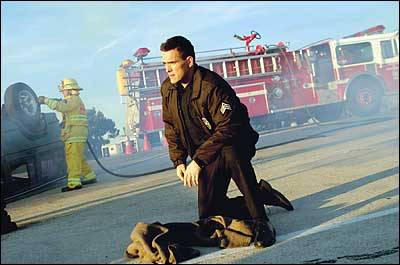
There's real humanity. Two characters come face to face with mortality, and all of the bullshit is pushed aside in efforts to secure rescue. But, then, after that moment, we go right back to the bullshit. Nothing really changes.
The movie notices that they missed a few race cards, and continue on with their game.
I remember tearing up the first time that I watched this movie. I don't know whether my girlfriend and I were fighting that may have caused those tears. Or maybe her breath was stanky with onions (while trying to make-out with me in the theatre) that brought me to fight some tears. Or maybe 15 years later, I've become a heartless SOB, but outside of that crash scene, the only time I was moved was when Sandra Bullock fell down some stairs.

- moved to laughter.
It still makes me laugh. That's my fav part of the movie for sure. I wish that they had ended the movie there.
She's spread out at the bottom of the steps. And then a silent roll of the credits. It would have made just as much sense as the actual ending. She DOES however end up being ok, and less racist, as a result... somehow.
So, if any of you know someone who's super racist ("coughtrump") and notice that they're near some steps... do your part. We'll end racism one flight of stairs at a time.
In the end, this movie is about diverse groups of one dimensional assholes, who complain about everything (even the rich, white people... cuz we all know how hard their lives are), and through sappy music and a lack of learning from some contrived moments, make little progress towards peace.
Totally unrealistic. In real life, we get shit done!
Grade: A/D/A
A for the race talk (which hopefully I was successful in not talking about:)
D for... just about everything else...
... and another A for Sandra Bullock’s tumble down the stairs.
#crash#john praphit#praphitproductions.com#Movie Reviews#Sandra Bullock#brendan fraser#race talk#racism#praphit#michael pena#saint christopher#jennifer esposito#bahar soomekr#racist#black lives matter#ludacris#larenz tate
3 notes
·
View notes
Text
Kukangendai — Palm (Ideologic Organ)

Palm by Kukangendai
You, regular Dusted reader and experimental music fan, may be familiar with that unnerving project where a generative neural network is fed a bunch of music, say, death metal or late Coltrane and uses it to randomly generate sound. The results are unlistenable, but surely the day draws uncomfortably near when these networks will stop behaving like so many mechanical monkeys on so many proverbial typewriters and start giving their creations form. When that day comes, some smartass grad student will feed their network a steady diet of Can, Joshua Abrams, James Brown, and —why not? — Tool, and it’ll sound a lot like Palm, by Kyoto trio Kukangendai.
The King of Soul would find the music on Palm difficult to digest, but take a gander at musicologist Robert Palmer’s description of Brown’s process:
The rhythmic elements became the song. There were few chord changes, or none at all, but there were plenty of trick rhythmic interludes and suspensions. . . Brown and his musicians began to treat every instrument and voice in the group as if it were a drum”[1].
That’s a pretty literal description of what Kukangendai is up to here. Though Kukangendai is a classic guitar/bass/drums trio, it is for all practical purposes, a percussion ensemble. Chords are rare, chord progressions almost non-existent, and floating harmonics stand in for harmonies. The guitar and bass mostly play pulsing singular notes; drums and hi-hat (always closed) are hit one at a time. What Kukangendai doesn’t have is soul. Though performed on strings, plastic, metal and wood, Palm is cold, digital music in that it is constructed from an elaborate rhythmic assemblage of ones and zeros, single sounds and silences. So advanced are its mutating rhythms and so restricted is its harmonic and melodic range that Palm has slightly more emotional pull than a line of code.
Palm’s polyhedral polyrhythms are quite a rush, in their own disinterested way, but there are hints of human sensibility. Anxious vocals, low in the mix, surface towards the end of “Singou,” but the piece ends suddenly after their emergence, their non-binary emotions unable to be integrated into the relentless rhythm. “Mure” and “Menomae” are formally funky, but without possessing any of the sweaty, stanky connotations of the word. You could dance to them, maybe, but it would be as much an intellectual exercise as a bodily one. Melodies, when they emerge, as they do on closer “Chigaukoto wo Kangaeyo” are minimal, broken, and, as a result of Palm’s cool indifference, eerie.
With all of this heady tech talk, it’s important to remember that Palm was performed by human beings on physical instruments. Their discipline and precision is impressive, but the music they create, intricate, spiky, tense, brittle, and so tight as to be anaerobic, (you get the sense one good cymbal hit would bring the whole thing crashing down), is easy to admire, great fun to hear and difficult to love. Palm is digital funk played on analog instruments; it’s the sound of Replicant psychedelia, Saturday night in the Borg cube. Call Kukangendai, contra Abrams, the Unnatural Information Society.
Isaac Olson
[1] Sweet Soul Music, Peter Guaralnick.
1 note
·
View note
Text
Black Music Month: Artists and Albums that Matter to Me

June is #BlackMusicMonth, an annual celebration of African Americans’ innumerable contributions to the American–and global–musical landscape. Each day this month, I’m highlighting some of my favorite artists and albums.
Day 17
Father’s Day
It’s Father’s Day, a day when we’re celebrating dads, daddies, pops, papas, granddads, grandpas, fathers-in-law, step fathers, father figures, and all the men who make up the villages that raised, nurtured, protected, provided for, and loved us. But it’s still Black Music Month, which means today’s even more special as we shine a spotlight on a small and certainly not exhaustive group of musical fathers.
Thomas A. Dorsey, the Father of Gospel Music
Born in Georgia at the end of the 19th century, Thomas A. Dorsey is regarded as the founding father of gospel music. Beginning as a blues pianist, Dorsey blended blues and jazz with traditional Christian praise music to create a new style that began gaining popularity in the early ‘30s. Pulling from ancestral spirituals, call and response, and the moans, yells, and hollers that came to symbolize the Black religious experience in America, Dorsey ushered in a new, modern sound that took churches across the country by storm and laid the foundation for today’s contemporary gospel. His most famous composition, “Precious Lord, Take My Hand,” became the golden standard as performed by Mahalia Jackson.
WC Handy, the Father of the Blues
Blues music finds its roots deep in African musical and cultural aesthetics, field/work songs, ancestral spirituals, and European folk music. Its popularity began to increase, according to some accounts, following Emancipation, and at the dawn of the 1900s, had established itself as a staple in Black households. WC Handy would come to be one of the most accomplished and esteemed blues composers, and called the Father of the Blues. Handy is best known for harnessing the power of the Delta blues and unleashing it on an international audience through songs like “Beale Street Blues” and “Saint Louis Blues,” the latter of which was recorded in the 1920s by Bessie Smith and Louis Armstrong.
youtube
Scott Joplin and Buddy Bolden, the Fathers of Ragtime and Jazz
Although typically associated with New Orleans, ragtime actually originated in the 19th century in the midwest. Actor and singer Ernest Hogan was among the first Black performers to bring ragtime, which is characterized by syncopated rhythms and shares DNA with cakewalks, folk, and marches, to a wider audience. The style was further popularized by composer Scott Joplin. His song “The Entertainer” is one of the most recognizable ragtime tunes. Joplin’s compositions formed the basis for many other ragtime musicians, and in the early days of jazz, ragtime continued to influence a new cadre of players.
When ragtime made its way to the Crescent City, musicians there began to add their own layers of flavor to the sounds Joplin pioneered. Key among them was Buddy Bolden, a cornet player whose New Orleans band is thought to be the first to incorporate brass instruments into blues compositions, somewhere around 1900. Bolden’s career was relatively short, due to illness, but during his time he cultivated a style that pulled from ragtime, blues, and spirituals, creating the fusion that would come to be known as jazz.
Louis Jordan, the Father of R&B
Rhythm and blues, aka R&B, was coined by record labels in the 1940s as a way to define music intended to be sold to Black audiences. Identifying blues and jazz-based compositions with particularly persistent rhythmic patterns as such, R&B bands typically involved piano, guitar, drums, and bass, and brass and/or woodwinds. Lyrically, R&B focused on relationships, sex, and everyday life. Musician Louis Jordan is credited as being one of the pioneers of R&B, popularizing the sound with tunes like “I’m Gonna Leave You on the Outskirts of Town” and “Five Guys Name Moe.”
James Brown, the Godfather of Soul
Mr. Brown really needs no introduction, but this list of Black musical fathers wouldn’t be complete without the Godfather himself. Soul music mixes R&B, gospel, and rock, and in the 1960s became nearly synonymous with the Black experience in America. Whereas R&B tended to focus on interpersonal relationships and happenings on the home front, soul took a more outward perspective, offering commentary on what was happening in the community and in the world at large. James Brown’s brand of soul music was unapologetically Black and proud, and his complex arrangements and irresistibly danceable jawns would go on to pave the way for funk and hip-hop.
Fats Domino, Ray Charles, and Chuck Berry, the Fathers of Rock n Roll
Building on blues, gospel, folk, and country, rock n roll’s origins couldn’t be further away from metal hair bands and Seattle grunge. While numerous sub-genres would emerge from rock n roll over the decades, it is absolutely, without a doubt, derived from the Black American musical movement. And although it can’t be attributed to just one musician as its founder, three of the genre’s most influential artists are New Orleans musician Fats Domino; blues, jazz, and soul legend Ray Charles; and the man whose kinetic style of playing brought legions of white teens to fever, Chuck Berry. These musicians, along with Little Richard, Ike Turner, Bo Diddley, and countless others are the ones to whom we owe the deepest gratitude for the attitude that would birth Jimi, Prince, and Lenny, not to mention Living Colour, King’s X, Fishbone, Robert Randolph, Ben Harper, and many, many, many more.
George Clinton, the Father of Funk
Funk can be somewhat hard to define and yet, when you hear it, you know it. Funk makes your face curl up like you smell something stanky, makes your neck snap back and forth on the downbeat, and is often delivered in the key of E flat minor. Funk is the hybrid of everything that came before, leaning more assertively into the groove--that bass line, them drums. And no one does funk better than the one and only Dr. Funkenstein, George Clinton. To look at Clinton in his signature space age pimp get-ups, with colorful ribbons and yarn dangling from his head and the most outrageous costumes one could barely imagine without adequate amounts of ooo-wee and who knows what else, you’d be hard pressed to believe he started out as a doo-wop singer. That group, The Parliaments, eventually morphed into Parliament and Funkadelic (P-Funk). Stacking Afrofuturism and a fascination with sci-fi on top of R&B, soul, and rock n roll, Clinton fashioned funk that, on the surface, seemed to be mostly about the booty shake, but that also touched on substantive topics.
youtube
DJ Kool Herc, the Father of Hip-Hop
Undoubtedly the most influential musical genre to come out of the Black music movement is hip-hop, whose origins are traced precisely to one date, one place, and one person: August 11, 1973, 1520 Sedgwick Ave. in The Bronx, DJ Kool Herc. On that night in that spot, the Jamaican-born deejay introduced a room full of revelers to what would eternally be known as the break, birthing a movement that would, at first, be dismissed as non-music adored only by Black and brown people, only to become the top-selling genre of modern music, worldwide. Employing two turntables playing the same record, Herc developed a style of playing that allowed him to isolate specific rhythms or rhythmic patterns. He looped these parts so they played over and over, sending dancers into a frenzy and electrifying the room. Scores of young African Americans and Latinxs began not only consuming this new style of music, but creating it, along with fashion, vocabulary, and a lifestyle that, today, is holistically identified as hip-hop culture. Despite how hip-hop has morphed in the decades since that fateful night in The Bronx, hip-hop is, at its core, one simple thing: The break. It’s the heart and soul of Gen X, and every generation to come.
--Rhonda Nicole
3 notes
·
View notes
Text
Paint colors designed by neural network, Part 2

So it turns out you can train a neural network to generate paint colors if you give it a list of 7,700 Sherwin-Williams paint colors as input. How a neural network basically works is it looks at a set of data - in this case, a long list of Sherwin-Williams paint color names and RGB (red, green, blue) numbers that represent the color - and it tries to form its own rules about how to generate more data like it.
Last time I reported results that were, well... mixed. The neural network produced colors, all right, but it hadn’t gotten the hang of producing appealing names to go with them - instead producing names like Rose Hork, Stanky Bean, and Turdly. It also had trouble matching names to colors, and would often produce an “Ice Gray” that was a mustard yellow, for example, or a “Ferry Purple” that was decidedly brown.
These were not great names.

There are lots of things that affect how well the algorithm does, however.
One simple change turns out to be the “temperature” (think: creativity) variable, which adjusts whether the neural network always picks the most likely next character as it’s generating text, or whether it will go with something farther down the list. I had the temperature originally set pretty high, but it turns out that when I turn it down ever so slightly, the algorithm does a lot better. Not only do the names better match the colors, but it begins to reproduce color gradients that must have been in the original dataset all along. Colors tend to be grouped together in these gradients, so it shifts gradually from greens to browns to blues to yellows, etc. and does eventually cover the rainbow, not just beige.
Apparently it was trying to give me better results, but I kept screwing it up.
Raw output from RGB neural net, now less-annoyed by my temperature setting

People also sent in suggestions on how to improve the algorithm. One of the most-frequent was to try a different way of representing color - it turns out that RGB (with a single color represented by the amount of Red, Green, and Blue in it) isn’t very well matched to the way human eyes perceive color.
These are some results from a different color representation, known as HSV. In HSV representation, a single color is represented by three numbers like in RGB, but this time they stand for Hue, Saturation, and Value. You can think of the Hue number as representing the color, Saturation as representing how intense (vs gray) the color is, and Value as representing the brightness. Other than the way of representing the color, everything else about the dataset and the neural network are the same. (char-rnn, 512 neurons and 2 layers, dropout 0.8, 50 epochs)
Raw output from HSV neural net:

And here are some results from a third color representation, known as LAB. In this color space, the first number stands for lightness, the second number stands for the amount of green vs red, and the third number stands for the the amount of blue vs yellow.
Raw output from LAB neural net:

It turns out that the color representation doesn’t make a very big difference in how good the results are (at least as far as I can tell with my very simple experiment). RGB seems to be surprisingly the best able to reproduce the gradients from the original dataset - maybe it’s more resistant to disruption when the temperature setting introduces randomness.
And the color names are pretty bad, no matter how the colors themselves are represented.
However, a blog reader compiled this dataset, which has paint colors from other companies such as Behr and Benjamin Moore, as well as a bunch of user-submitted colors from a big XKCD survey. He also changed all the names to lowercase, so the neural network wouldn’t have to learn two versions of each letter.
And the results were... surprisingly good. Pretty much every name was a plausible match to its color (even if it wasn’t a plausible color you’d find in the paint store). The answer seems to be, as it often is for neural networks: more data.
Raw output using The Big RGB Dataset:

I leave you with the Hall of Fame:
RGB:

HSV:

LAB:

Big RGB dataset:

7K notes
·
View notes
Photo

The Stanky Brown Group – Our Pleasure To Serve You 1976 Genre:Rock Style:Soft Rock, Classic Rock Year:1976
0 notes
Text
001-17940THE STANKY BROWN GROUP our pleasure to serve y 33GIRI LP disco DISCHI
FOTO DEL PRODOTTO usato da ripulire segni del tempo
LO SVUOTACANTINE FOTO
View On WordPress
0 notes
Text
001-17940THE STANKY BROWN GROUP our pleasure to serve y 33GIRI LP disco DISCHI
001-17940THE STANKY BROWN GROUP our pleasure to serve y 33GIRI LP disco DISCHI
FOTO DEL PRODOTTO usato da ripulire segni del tempo
LO SVUOTACANTINE FOTO
View On WordPress
0 notes